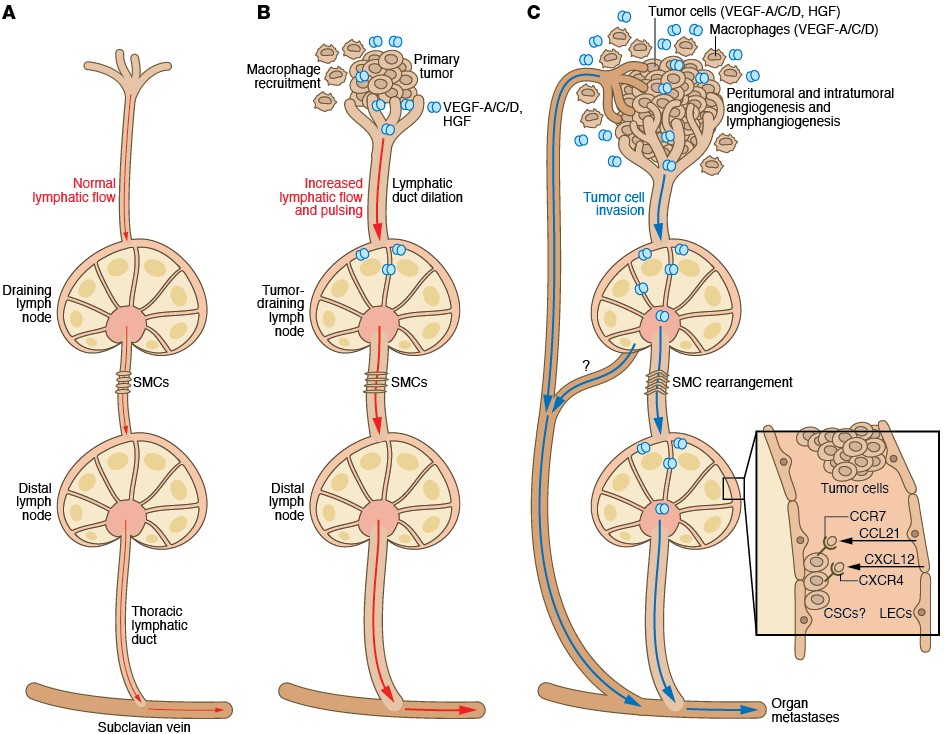Tumor lymphangiogenesis and metastasis
Metastasis to regional lymph nodes represents the first step of tumor dissemination in most cancers and serves as a major prognostic indicator and parameter for the choice of adjuvant therapy. However, little is known about the mechanisms how tumor cells matastasize to lymph nodes.
In 2001, we discovered the first direct evidence for active tumor lymphangiogenesis, demonstrating that overexpression of the growth factor VEGF-C by breast cancer cells resulted in enhanced lymphangiogenesis and lymph node metastasis. These findings led to a new model of cancer progression and suggested tumor lymphangiogenesis as a new prognostic parameter and therapeutic target.
Our recent results reveal that tumor lymphangiogenesis indeed serves as a prognostic indicator for lymph node metastasis and survival in human malignant melanomas. We are particularly interested in identifying new therapeutic targets to block metastatic cancer spread and to inhibit the growth of existing lymph node metastases.
To this end, we use laser capture microdissection of normal and malignant tissues, and co-culture systems for metastastic and non-metastatic cancer cells with lymphatic or blood vascular endothelial cells. These models allow us to screen – using genomics and proteomics approaches - for the distinct effects of metastatic cancer cells on lymphatic endothelium, and for the effects of lymphatic endothelium-derived factors on the activation of metastatic cancer cells, potentially leading to the identification of novel targets for advanced cancer therapy.

